Do you have a question about the Kenwood KRF-X9080D and is the answer not in the manual?
Explains the manual's structure: Preparations, Operations, Remote Control, Additional Information.
Covers general warnings, cautions, cleaning, and contact cleaner advice for safe operation.
Instructions to carefully unpack and check all accessories before use.
Steps to load batteries, operate the remote, and understand memory backup.
Explains THX, Dolby, DTS, Neo:6, and DSP for enhanced surround sound and audio effects.
Covers DVD 6-channel input, EQ modes, IR remote, Video up conversion, RDS tuner.
Explains the various indicators, input jacks, and control keys on the receiver's main unit.
Details the keys and functions of the remote control unit for operating components.
How to select input modes and connect audio components using RCA cords.
Procedure to reset the unit's microcomputer to resolve malfunctions.
Instructions for connecting speaker wires to the receiver terminals.
Recommended speaker positions and matching impedance to receiver for optimal sound.
Diagrams for connecting cassette decks, MD recorders, CD/DVD players, and record players.
Using S-Video and composite jacks for connecting video sources.
Connecting components using coaxial and optical digital audio outputs.
Instructions for connecting video components using component jacks for superior picture quality.
Connecting a DVD player with 6-channel output for surround sound.
Detailed diagrams for connecting front, center, surround, and back speakers.
Using PRE OUT jacks to connect to external power amplifiers for multi-channel audio.
Connecting the main system to a monitor TV and speakers in another room.
Connecting AV AUX devices and AM/FM antennas for broadcast reception.
Setting up speaker parameters like size, distance, and LFE level for optimal surround.
Adjusting speaker volume levels using test tones and limiting bass peak levels.
Measuring and inputting speaker distances and setting the LFE level.
Choosing what information is displayed on the receiver's screen.
Adjusting input levels for analog sources to prevent clipping or signal issues.
Initial steps, source selection, speaker system activation, and volume adjustment for playback.
Adjusting bass, treble, and low-frequency emphasis for desired sound quality.
Managing loudness, muting audio, and applying Active EQ modes for enhanced sound.
Adjusting audio output based on speaker size for natural sound experience.
Connecting headphones and adjusting volume for private listening.
Instructions for recording analog/digital audio and video sources.
Methods for tuning non-RDS and RDS radio stations.
Explanation of RDS features like PS display, RT, PTY search, and AUTO MEMORY.
Storing favorite radio stations and selecting presets using memory and P.CALL keys.
Managing RDS display modes and automatically storing stations.
Searching for radio stations broadcasting specific program types (genres).
Introduces surround modes and speaker placement for 5.1 and 6.1/7.1 systems.
Explains Dolby Digital, EX, Pro Logic IIx, DTS, DTS-ES, Neo:6, and DTS 96/24 formats.
Details THX features, DSP modes for atmosphere, and DVD 6-channel input.
Guide to selecting various listening modes for Dolby Digital, DTS, and Pro Logic sources.
Adjustments for night listening, music balance, surround effect, and center image.
Features for Dolby Digital dual mono, 96kHz LPCM playback, and display brightness.
Procedures for managing setup codes for other components.
Customizing remote keys, operating components, and resetting the remote.
Programming remote control codes onto specific keys for component control.
Lists setup codes for cassette decks, CD/MD players, and TVs.
Key functions for operating cassette decks, CD players, and MD recorders with the remote.
Describes the functions of TV, VCR, and DVD player operation keys on the remote.
Describes the functions of satellite and cable operation keys on the remote.
Procedure to reset the unit and common amplifier problems with remedies.
Common tuner problems like no reception, interference, and preset issues with solutions.
Solutions for issues with selecting inputs or the remote control not operating correctly.
Details power output, frequency response, digital inputs/outputs, and video specs.
FM/AM tuner specs, power, dimensions, weight, and notes.
Explains the manual's structure: Preparations, Operations, Remote Control, Additional Information.
Covers general warnings, cautions, cleaning, and contact cleaner advice for safe operation.
Instructions to carefully unpack and check all accessories before use.
Steps to load batteries, operate the remote, and understand memory backup.
Explains THX, Dolby, DTS, Neo:6, and DSP for enhanced surround sound and audio effects.
Covers DVD 6-channel input, EQ modes, IR remote, Video up conversion, RDS tuner.
Explains the various indicators, input jacks, and control keys on the receiver's main unit.
Details the keys and functions of the remote control unit for operating components.
How to select input modes and connect audio components using RCA cords.
Procedure to reset the unit's microcomputer to resolve malfunctions.
Instructions for connecting speaker wires to the receiver terminals.
Recommended speaker positions and matching impedance to receiver for optimal sound.
Diagrams for connecting cassette decks, MD recorders, CD/DVD players, and record players.
Using S-Video and composite jacks for connecting video sources.
Connecting components using coaxial and optical digital audio outputs.
Instructions for connecting video components using component jacks for superior picture quality.
Connecting a DVD player with 6-channel output for surround sound.
Detailed diagrams for connecting front, center, surround, and back speakers.
Using PRE OUT jacks to connect to external power amplifiers for multi-channel audio.
Connecting the main system to a monitor TV and speakers in another room.
Connecting AV AUX devices and AM/FM antennas for broadcast reception.
Setting up speaker parameters like size, distance, and LFE level for optimal surround.
Adjusting speaker volume levels using test tones and limiting bass peak levels.
Measuring and inputting speaker distances and setting the LFE level.
Choosing what information is displayed on the receiver's screen.
Adjusting input levels for analog sources to prevent clipping or signal issues.
Initial steps, source selection, speaker system activation, and volume adjustment for playback.
Adjusting bass, treble, and low-frequency emphasis for desired sound quality.
Managing loudness, muting audio, and applying Active EQ modes for enhanced sound.
Adjusting audio output based on speaker size for natural sound experience.
Connecting headphones and adjusting volume for private listening.
Instructions for recording analog/digital audio and video sources.
Methods for tuning non-RDS and RDS radio stations.
Explanation of RDS features like PS display, RT, PTY search, and AUTO MEMORY.
Storing favorite radio stations and selecting presets using memory and P.CALL keys.
Managing RDS display modes and automatically storing stations.
Searching for radio stations broadcasting specific program types (genres).
Introduces surround modes and speaker placement for 5.1 and 6.1/7.1 systems.
Explains Dolby Digital, EX, Pro Logic IIx, DTS, DTS-ES, Neo:6, and DTS 96/24 formats.
Details THX features, DSP modes for atmosphere, and DVD 6-channel input.
Guide to selecting various listening modes for Dolby Digital, DTS, and Pro Logic sources.
Adjustments for night listening, music balance, surround effect, and center image.
Features for Dolby Digital dual mono, 96kHz LPCM playback, and display brightness.
Procedures for managing setup codes for other components.
Customizing remote keys, operating components, and resetting the remote.
Programming remote control codes onto specific keys for component control.
Lists setup codes for cassette decks, CD/MD players, and TVs.
Key functions for operating cassette decks, CD players, and MD recorders with the remote.
Describes the functions of TV, VCR, and DVD player operation keys on the remote.
Describes the functions of satellite and cable operation keys on the remote.
Procedure to reset the unit and common amplifier problems with remedies.
Common tuner problems like no reception, interference, and preset issues with solutions.
Solutions for issues with selecting inputs or the remote control not operating correctly.
Details power output, frequency response, digital inputs/outputs, and video specs.
FM/AM tuner specs, power, dimensions, weight, and notes.
| rated power output during stereo operation (DIN/IEC, 20 Hz ~ 20kHz, 0.09 % T.H.D. at 6 Ω) | 100 W + 100 W |
|---|---|
| effective power output during surround operation FRONT (20 Hz ~ 20 kHz, 0.09 % T.H.D. at 6 Ω) | 100 W + 100 W |
| effective power output during surround operation CENTER (20 Hz ~ 20 kHz, 0.09 % T.H.D. at 6 Ω) | 100 W |
| effective power output during surround operation SURROUND (20 Hz ~ 20 kHz, 0.7 % T.H.D. at 6 Ω) | 100 W + 100 W |
| effective power output during surround operation SURROUND BACK (20 Hz ~ 20 kHz, 0.7 % T.H.D. at 6 Ω) | 100 W + 100 W |
| total harmonic distortion | 0.009 % (1 kHz, 50 W, 6 Ω) |
| frequency response Line | 10 Hz ~ 100 kHz, 0 dB ~ –3.0 dB |
| frequency response PHONO ‘RIAA’ | 40 Hz ~ 20 kHz, +1.5 dB ~ –3.0 dB |
| maximum input level PHONO (MM) | 40 mV, 1 % T.H.D. at 1 kHz |
| signal to noise ratio PHONO (MM) | 75 dB |
| signal to noise ratio Line | 95 dB |
| loudness control | VOLUME at –30 dB level . +6 dB (100 Hz) |
| input sensitivity / impedance PHONO (MM) | 4 mV / 47 kΩ |
| input sensitivity / impedance Line | 300 mV / 47 kΩ |
| output level / impedance TAPE REC | 300 mV / 1 kΩ |
| output level / impedance PRE OUT (FRONT CHANNEL) | 1 V / 500 Ω |
| output level / impedance PRE OUT (CENTER CHANNEL) | 1 V / 500 Ω |
| output level / impedance PRE OUT (SURROUND CHANNEL) | 1 V / 500 Ω |
| output level / impedance PRE OUT (SURROUND BACK CHANNEL) | 1 V / 500 Ω |
| output level / impedance PRE OUT (SUBWOOFER) | 1 V / 500 Ω |
| tone control BASS | ±10 dB (at 100 Hz) |
| tone control TREBLE | ±10 dB (at 10 kHz) |
| sampling frequency | 32 kHz, 44.1 kHz, 48 kHz, 96 kHz |
|---|---|
| input level / impedance / wave length Optical | –15 dBm ~ –24 dBm, 660 nm ±30 nm |
| input level / impedance Coaxial | 0.5 Vp-p / 75 Ω |
| output level / impedance / wave length Optical | –21 dBm ~ –15 dBm, 660 nm ±30 nm |
| video inputs / outputs VIDEO (composite) | 1 Vp-p / 75 Ω |
|---|---|
| S VIDEO inputs /outputs S VIDEO (luminance signal) | 1 Vp-p / 75 Ω |
| S VIDEO inputs /outputs S VIDEO (chrominance signal) | 0.286 Vp-p / 75 Ω |
| COMPONENT VIDEO inputs/ outputs COMPONENT VIDEO (luminance signal) | 1 Vp-p / 75 Ω |
| COMPONENT VIDEO inputs/ outputs COMPONENT VIDEO (CB/CR-signal) | 0.7 Vp-p / 75 Ω |
| tuning frequency range | 87.5 MHz ~ 108.0 MHz |
|---|---|
| usable sensitivity MONO | 1.3 µV (75 Ω)/ 13.2 dBf (40 kHz dev, S/N 26 dB) |
| usable sensitivity STEREO | 45 µV (75 Ω)/ 42.1 dBf (40 + 6 kHz dev, S/N 46 dB) |
| total harmonic distortion MONO (1 kHz, 40 kHz dev) | 0.2% (65.2 dBf input) |
| total harmonic distortion STEREO (1 kHz, 40 + 6 kHz dev) | 0.8% (65.2 dBf input) |
| signal to noise ratio MONO | 65 dB (65.2 dBf input) |
| signal to noise ratio STEREO | 60 dB (65.2 dBf input) |
| stereo separation (1 kHz) | 36 dB |
| selectivity (DIN ±300 kHz) | 64 dB |
| frequency response (30 Hz ~ 15 kHz) | +0.5 dB, –3.0 dB |
| tuning frequency range | 531 kHz ~ 1, 602 kHz |
|---|---|
| usable sensitivity (30% mod, S/N 20 dB) | 16 µV / (600 µV/m) |
| signal to noise ratio (30% mod, 400 Hz) | 50 dB (60 dBµV EMF input) |
| power consumption | 330 W |
|---|---|
| standby power consumption | less than 1.5W |
| AC outlet SWITCHED | total 90 W max. |
| dimensions W | 440 mm (17-5/16") |
| dimensions H | 159 mm (6-1/4") |
| dimensions D | 392 mm (15-7/16") |
| weight (Net) | 12.0 kg (26.5 lb) |
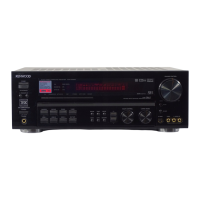
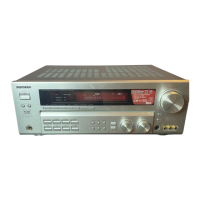



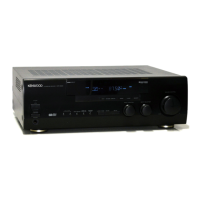

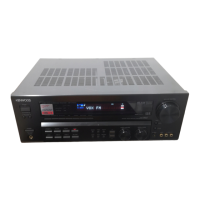

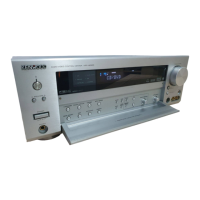
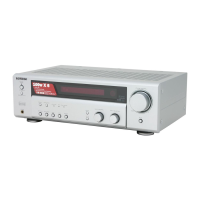

